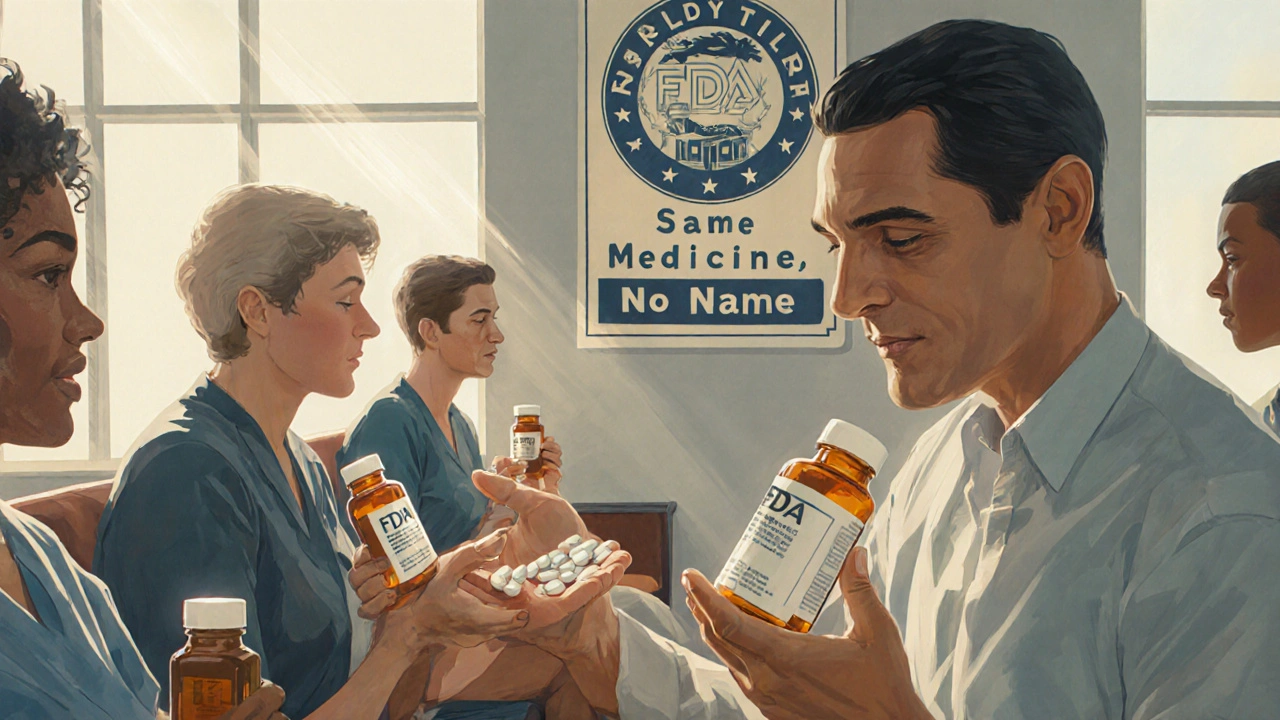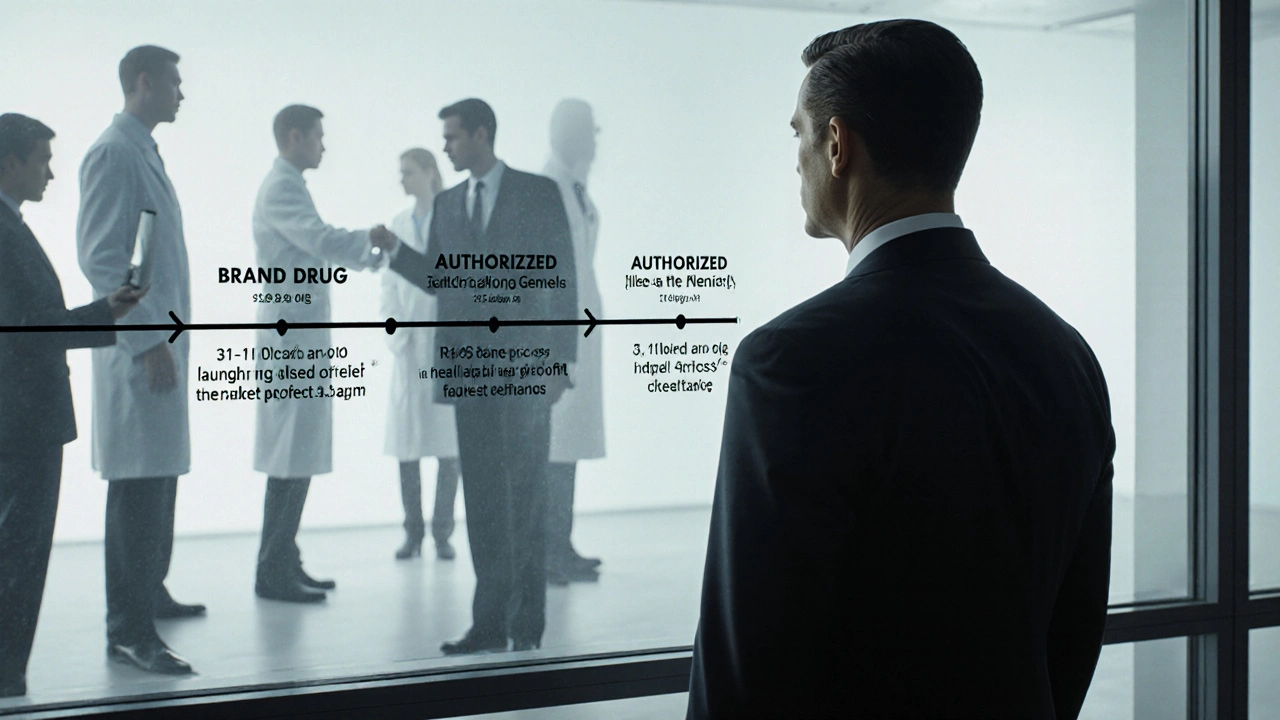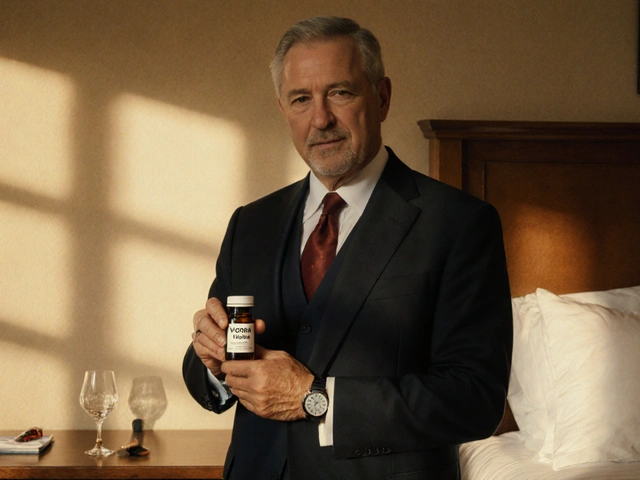When your prescription switches from a brand-name drug to a generic, do you even notice? Most people don’t. But here’s the twist: not all generics are the same. Some are made by the very company that made the brand-name drug - these are called authorized generics. And while they look, feel, and work exactly like the original, they’re sold without the brand name on the bottle. So, do patients actually choose them? Or are they just handed to you without a say?
What Exactly Is an Authorized Generic?
An authorized generic isn’t a copy. It’s the exact same pill, capsule, or liquid you got from the brand-name maker - same active ingredient, same inactive ingredients, same factory, same packaging (minus the logo). The only difference? No brand name on the label. You’re getting the same product, just cheaper. Unlike regular generics, which go through a separate FDA review process called ANDA, authorized generics ride on the brand’s original approval, known as an NDA. That means they hit the market faster - sometimes the same day the patent expires. And because they’re made by the same company, there’s no guesswork about whether they’ll work the same way. The FDA’s Orange Book lists them as "products with no applicant," which sounds confusing until you realize: there’s no new applicant. The brand company is still the one producing it. This isn’t a loophole - it’s a legal pathway created under the Hatch-Waxman Act of 1984. But it’s one that’s become a strategic tool for big pharma.Why Patients Don’t Really "Choose" Them
Here’s the reality: most patients don’t pick between authorized generics and traditional generics. They don’t even know the difference. Insurance plans and pharmacy benefit managers (PBMs) decide what gets dispensed. In fact, 82% of commercial insurance plans automatically substitute generics for brand-name drugs - no permission needed. If your plan has an authorized generic on its formulary, that’s what you’ll get. If it doesn’t, you’ll get a regular generic. Your doctor might write "dispense as written," but even then, pharmacists often substitute unless you specifically ask otherwise. And most people don’t ask. They’re focused on cost, not manufacturing details. A 2022 KFF analysis found that only 12% of patients can request the brand-name drug without prior authorization. That means if your insurer says "go generic," you’re going generic - whether it’s authorized or not.Do Patients Notice the Difference?
Here’s where it gets interesting. When patients do switch from brand to generic, they’re more likely to stick with an authorized generic than a regular one. A 2018 study tracking 210,000 patients found that 22.3% of people switched back to the brand after starting an authorized generic. For those who started a traditional generic? That number jumped to 28.7%. That’s a 22% drop in switchbacks - and it’s not because authorized generics are cheaper. They’re not. In fact, they’re often priced higher than regular generics. Why? Because patients don’t notice a difference. The pill looks the same. The taste is the same. The way it works feels the same. In a Consumer Reports survey of 1,200 people, 78% couldn’t tell the difference between an authorized generic and the brand-name drug when given unlabeled samples. For traditional generics? Only 52% couldn’t tell. Reddit threads and pharmacy forums echo this. In a 2022 thread on r/pharmacy with 87 comments, 63% of users said they couldn’t tell any difference between authorized generics and brand drugs. That’s not because they’re smarter - it’s because there’s nothing to tell.
Price Still Wins - Eventually
But here’s the catch: authorized generics don’t stay the cheapest option. They’re usually priced just below the brand-name drug - not below the traditional generic. After the first 180 days of generic competition, when other companies enter the market, prices drop hard. Traditional generics can be 30-50% cheaper than the brand. Authorized generics? Usually only 15-25% cheaper. That’s why, after the initial exclusivity window, traditional generics capture 65-75% of the market. Cost wins. The FTC found that during those first six months, authorized generics reduce retail prices by 4-8% and wholesale prices by 7-14%. That’s helpful - but temporary. Once the flood of cheaper generics hits, the authorized version gets pushed to the side. In the case of entacapone, a Parkinson’s drug, authorized generics cut Medicaid prices by over 10% and on-invoice prices by nearly 18%. But once other generics entered, those savings faded. The authorized version didn’t disappear - it just stopped being the best deal.Why Do Pharma Companies Use Them?
If patients don’t choose them and they’re not the cheapest, why do companies like Pfizer, Merck, and AbbVie launch them? Because they’re a smart business move. By launching an authorized generic the day their patent expires, brand companies can keep a piece of the market. They don’t lose everything to competitors. They keep profits flowing while still offering a lower-cost option. The FTC warned in 2011 that some companies use the threat of launching an authorized generic to pressure generic manufacturers into delaying their own entry. In exchange for not competing, the brand company gives the generic maker a share of the authorized generic market. It’s called a "pay-for-delay" agreement - and it’s been the subject of dozens of FTC investigations. It’s not illegal - but it’s controversial. Generic drug advocates say it undermines the whole point of Hatch-Waxman: to get low-cost generics to patients quickly. Instead, it creates a two-tier system where the brand company controls both sides.
What Does This Mean for You?
If you’re on a chronic medication - say, for high blood pressure, cholesterol, or diabetes - you’re likely taking a generic. But you probably don’t know if it’s authorized or not. Here’s what you can do:- Ask your pharmacist: "Is this an authorized generic?" They can check the Orange Book or the FDA’s "Products with No Applicant" list.
- Check the pill’s imprint code. Authorized generics often look identical to the brand. If you’ve taken the brand before and the new pill looks the same, it might be one.
- If cost isn’t your main concern and you’ve had issues with traditional generics (like side effects or inconsistent results), ask your doctor to specify "dispense as written" - and then ask if an authorized generic is available.
The Bigger Picture
Authorized generics make up about 12% of all generic drugs dispensed in the U.S. - up from 8% in 2015. By 2028, they could hit 15-18%. That’s not because patients are demanding them. It’s because pharmaceutical companies are using them to protect their revenue. The Congressional Budget Office estimates that if this trend continues, Medicare Part D could pay $1.2 billion more by 2027 because authorized generics delay full generic competition. That’s money that could go to lower premiums or better coverage. But here’s the flip side: during those first six months after a patent expires, authorized generics are often the only thing keeping prices down. Without them, the brand-name drug might stay at full price for longer. So are they good or bad? It depends on when you look. For patients in the first six months? They’re a win. For patients a year later? Traditional generics win on price. For the system? They’re a gray area - legal, effective, and deeply strategic.Final Thought: You’re Not Choosing - But You Could Be
You don’t choose authorized generics because the system doesn’t let you. But you could. If you care about consistency, if you’ve had bad experiences with generics before, or if you just want to know exactly what you’re taking - ask. Pharmacists can tell you. Doctors can help you request it. And if your insurer says no, you can appeal. It’s not easy - but it’s possible. The real question isn’t whether patients choose authorized generics. It’s whether we should be allowed to.Are authorized generics the same as brand-name drugs?
Yes. Authorized generics are manufactured by the same company that makes the brand-name drug, using the exact same formula, ingredients, and production process. The only difference is the label - no brand name. The FDA confirms they are chemically identical.
Why are authorized generics sometimes more expensive than regular generics?
Because they’re made by the brand company, they don’t have the same cost structure as traditional generics. Regular generics are produced by multiple competing manufacturers after the patent expires, driving prices down. Authorized generics enter first and are priced just below the brand - not below other generics. They’re cheaper than the brand, but not always the cheapest option long-term.
Can I ask my pharmacist for an authorized generic?
Yes. You can ask your pharmacist if an authorized generic is available for your medication. They can check the FDA’s Orange Book or the "Products with No Applicant" list. If your insurance allows it, they can dispense it. If not, you may need to pay out-of-pocket or ask your doctor to write "dispense as written."
Do authorized generics cause fewer side effects than regular generics?
They don’t cause fewer side effects - but they may cause different ones. Traditional generics can use different inactive ingredients (like fillers or dyes), which sometimes trigger reactions in sensitive patients. Authorized generics use the exact same inactive ingredients as the brand, so if you had no issues with the brand, you’re unlikely to have them with the authorized version.
How do I know if my prescription is an authorized generic?
Look at the pill’s imprint code - it should match the brand-name version. You can also ask your pharmacist or check the FDA’s Orange Book. Authorized generics are listed as "products with no applicant." Some pharmacies label them as "AG" or "Authorized Generic," but not all do.
Are authorized generics available for all brand-name drugs?
No. Only about 10-15% of brand-name drugs that go generic have an authorized generic version. They’re most common in cardiovascular, central nervous system, and chronic condition drugs - where brand loyalty and patient experience matter most. Companies like Pfizer, Merck, and AbbVie use them strategically, but many others don’t.




Chrisna Bronkhorst
November 14 2025Authorized generics are just brand drugs in a cheap suit. Pharma lets you think you're saving money but they're still taking the same cut. The system is rigged. You think you're choosing? Nah. You're just picking from what they let you see.